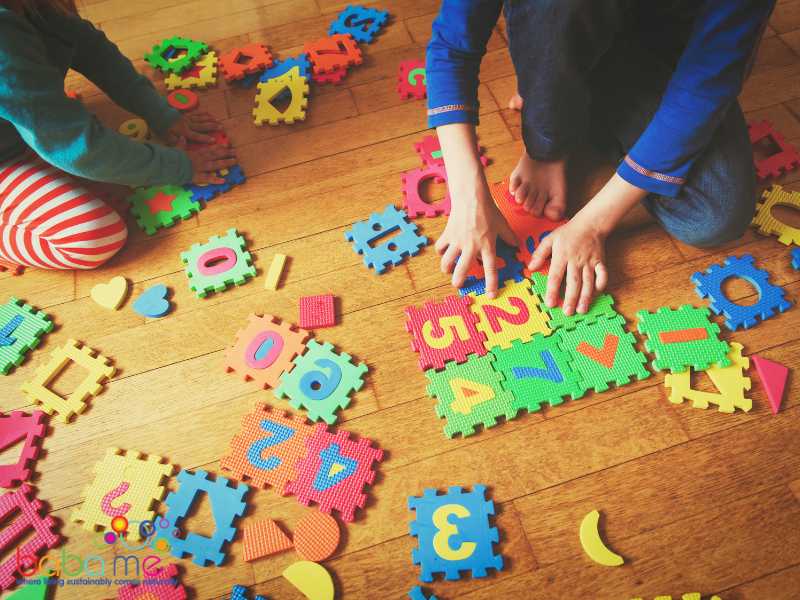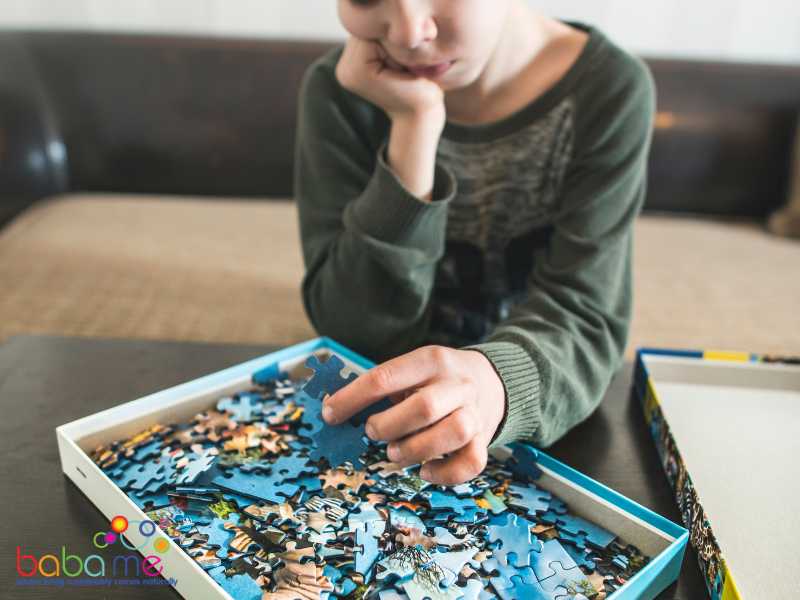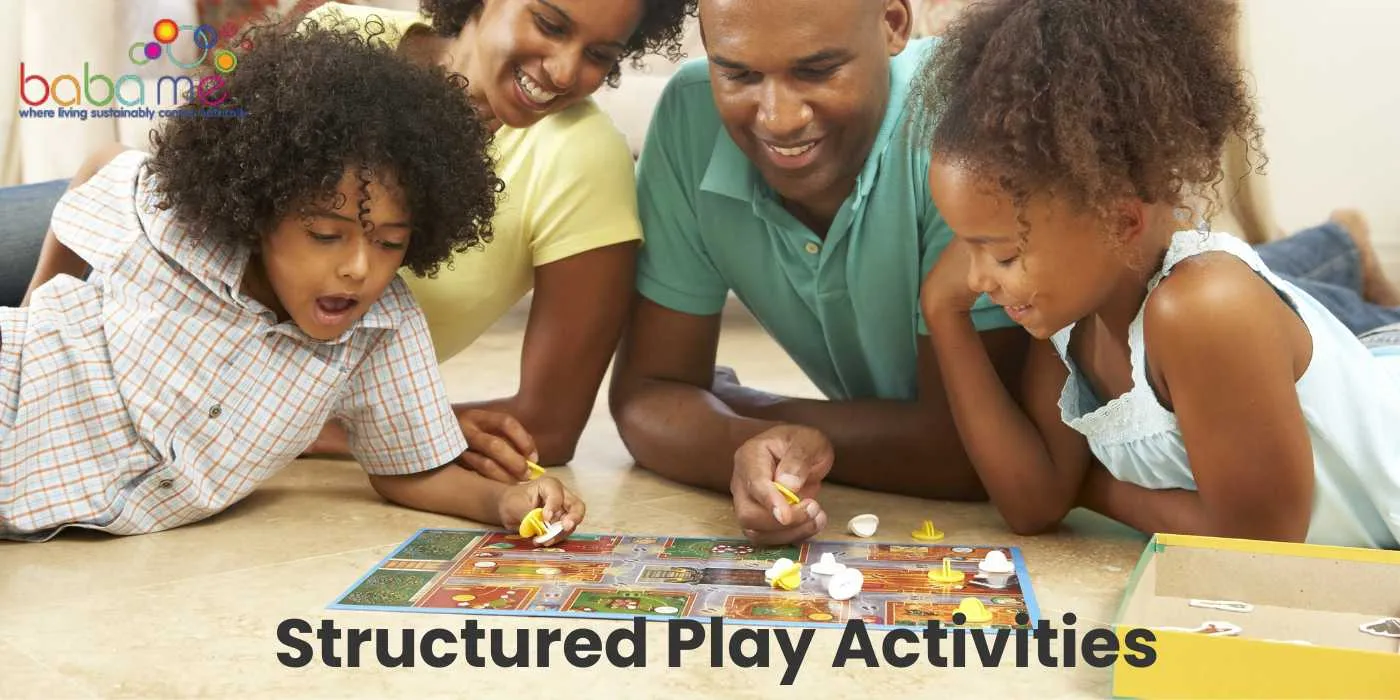Structured play activities are key stepping stones in a child’s developmental journey, providing the framework and guidance they need to learn and grow.
These activities, while maintaining a level of discipline and order, can foster a multitude of skills such as problem-solving, social interaction, and motor abilities.
We illuminate the benefits and examples of structured play activities, and how they contribute to children’s wholesome development.
Understanding Structured Play
Structured play activities are any games or activities that have a specific learning objective. These activities are generally instructor-led, and they can be used to teach a wide range of skills and behaviors. Structured play is a great way to help children learn and develop while having fun.
One of the key benefits of structured play is that it can help children learn important life skills. For example, a structured play activity might involve teaching children the months of the year or working on important physical abilities such as gross and fine motor skills. By participating in structured play activities, children can develop these skills in a fun and engaging way.
Another benefit of structured play is that it can help children learn how to follow rules. In many structured play activities, there are specific rules that children need to follow in order to participate. By learning how to follow these rules, children can develop important social and emotional skills such as cooperation, patience, and self-control.
Structured play activities can also be a great way to encourage children to be creative and imaginative. While these activities are often instructor-led, there is still plenty of room for children to use their imaginations and come up with their own ideas. By encouraging children to be creative and imaginative, structured play activities can help foster a love of learning and exploration.

Types of Structured Play Activities
Structured play activities are designed to give children a specific purpose, task, or learning objective. These activities usually have a set of rules that children must follow to play the game, helping them learn new skills whilst playing. Here are some types of structured play activities that you can consider for your child:
Board Games: Board games often require children to follow a specific set of rules and instructions, promoting cognitive development and strategic thinking. Examples include Chess, Scrabble, and Monopoly.
Puzzles: Whether it’s a jigsaw, crossword, or 3D puzzle, these activities help children improve their problem-solving skills and enhance their spatial and pattern recognition abilities.
Craft Projects: Activities such as painting by numbers, making a birdhouse, or following a specific origami pattern are excellent examples of structured play that enhance creativity while fostering fine motor skills and patience.
Team Sports: Participating in sports like soccer, basketball, or volleyball not only helps children improve their physical abilities but also teaches them the importance of teamwork, playing with other children, following rules and active listening, and strategic planning.
Dance and Music Lessons: These activities require children to follow a sequence of steps or notes, which can enhance their coordination, rhythm, and focus.
Educational Kits: Science, technology, engineering, and math (STEM) kits or model building kits provide children with step-by-step instructions and materials needed to complete a project, thereby encouraging sequential thinking, patience, and comprehension skills.
Structured Lego Play: While Legos can be used for open-ended play, they also come with instructions to build specific models, promoting spatial intelligence, attention to detail, and fine motor skills.
Cooking and Baking Activities: Following a recipe step-by-step not only results in a tasty treat but also helps children learn about measurements, sequence, and the science of cooking.

Benefits of Structured Play in Early Childhood
Structured play activities have numerous benefits for young children. Structured play is a type of play where an adult provides direction to the child. It can take the form of a game, a craft, or a physical activity. Structured play can help children develop cognitive, physical, social, and emotional skills.
Development of Cognitive Skills: Structured play activities often involve following specific steps and rules, which helps children develop cognitive skills such as problem-solving, strategic thinking, and comprehension.
Enhances Social Skills: In group structured play, like team sports or group craft projects, children learn to communicate, cooperate, and negotiate with peers. They also learn to understand and respect rules and boundaries.
Promotes Physical Development: Activities like team sports or dance classes not only improve physical health but also enhance coordination and motor skills.
Improves Focus and Discipline: Following instructions and rules in structured play helps children improve their focus and attention span. It also fosters patience and perseverance to reach a goal or complete a task.
Helpful for Children with Autism Spectrum Disorder (ASD): For children on the autism spectrum, structured play can be particularly beneficial. The predictability and routine involved in structured activities can provide a sense of security and reduce anxiety for these children. It can also help them improve their social interactions, fine motor skills, and ability to follow instructions. Moreover, it can serve as a platform for them to communicate their feelings and thoughts in a controlled environment, reducing the chances of sensory overload.
Encourages Creativity within Boundaries: While open-ended play is often associated with creative exploration, structured play also encourages creativity but within a set of guidelines.

Structured Play vs Free Play Or Unstructured play
When it comes to playtime for your child, you may have heard the terms “structured play” and “open ended play” thrown around. But what exactly do these terms mean, and how do these play skills differ?
Structured play is when an adult plans and organizes the play activity beforehand. These children’s play activities are usually focused on a specific goal or outcome, and often involve rules or guidelines that the child must follow.
On the other hand, free play is when the child is given the freedom to explore and play without any specific rules or guidelines. This type of play is often unstructured and open-ended, allowing the child to use their imagination and creativity. Examples of free play activities include playing with dolls, drawing, and block play.
Both structured and free play have their benefits. Structured play can help children develop problem-solving skills and your child will learn how to follow rules, while free play can encourage creativity and imagination. It’s important to provide a balance of both types of play as every child learn in different ways – but its all play based learning.
Here’s a quick comparison between structured and unstructured play:
| Structured Play | Free Play | |
|---|---|---|
| Definition | Activities that are led by an adult or are guided by specific rules or instructions. These activities have a specific goal or outcome in mind. | Activities that are not guided by adults or rules. Children are free to do as they please, allowing their creativity to guide the play. |
| Examples | Sports games, board games, dance classes, puzzles, craft activities following a template. | Pretend play, sandbox play, building with blocks without a specific design in mind, drawing or painting freely. |
| Cognitive Development | Develops problem-solving, strategic thinking, and comprehension skills. Encourages creativity within boundaries. | Enhances creativity, problem-solving, and critical thinking skills. |
| Social Skills | Encourages communication, cooperation, and negotiation with peers. Helps children understand and respect rules. | Boosts communication and negotiation skills in an unstructured setting. Enhances the ability to share and empathize. |
| Physical Development | Improves physical health, coordination, and specific motor skills. | Encourages general physical activity and coordination. |
| Benefits for Children with ASD | The predictability and routine can provide a sense of security, reduce anxiety, and help improve social interactions and motor skills. | Can provide a low-stress environment for children with ASD to explore and interact at their own pace. |
| Role of Adults | Adults lead the activity, provide instructions, or enforce rules. | Adults play a supportive role, but the child leads the activity. |
As a parent, it’s important to provide your child with opportunities for both structured and free play. This will help them develop a range of skills and abilities, while also allowing them to have fun and play independently and enjoy their childhood. So, whether you’re planning a structured play activity or simply letting your child play freely, remember that both types of play have their place in your child’s development.

Implementing Structured Play Activities
Structured play activities are a great way to help children learn important skills while having fun. Whether you’re a parent looking for ways to keep your child entertained at home or a teacher looking for new ideas for the classroom, there are many different structured play activities you can try.
At Home
Implementing structured play activities at home is easy and can be a lot of fun for both you and your child. Here are some ideas to get you started:
Laundry Sort: Use laundry baskets to sort clothes by color, size, or type. This activity helps develop color recognition, sorting skills, and hand-eye coordination.
Sensory Bins: Fill a plastic bin with different materials such as rice, beans, or sand. Add small toys or objects for your child to find and explore. This activity helps develop sensory processing skills and fine motor skills.
Board Games: Board games are a great way to teach turn-taking, following rules, counting skills and problem-solving. Choose age-appropriate games that your child can understand and enjoy/
At School
Structured play activities can be incorporated into the classroom in a variety of ways. Here are some ideas to consider:
Equipment Stations: Set up different stations around the classroom with different types of equipment, such as balls, hula hoops, or jump ropes. This activity helps develop gross motor skills and coordination.
Role-Playing: Encourage children to engage in role-playing activities, such as pretending to be a doctor or a chef. This activity helps develop social skills and imagination, as well as language skills.
Art Projects: Provide materials for children to create art projects, such as painting or drawing. This activity helps develop creativity and fine motor skills.
Outdoor games: Team games are structured play.
Remember, the key to implementing structured play activities is to make them fun and engaging for children. By incorporating these brain development activities into your daily routine, you can help your child develop important skills while having fun at the same time.





